| Also called Western or Oregon Crabapple, Malus fusca is a small tree native from south Alaska to north California. It is not remarkably beautiful in bloom; its small fruits are valued less than those of many of its cousins, both as regards ornamental and edible properties. I feature it this month almost only because very near where I live in Seattle, is an individual tree that is transcendently larger and more handsome than any of the others I have ever seen. It deserves its own praise. American Forests organization calls it the "national champion" for its size. It stands in Washington Park Arboretum, close to the visitor center, and was designated a Seattle Heritage tree in 2000. |
| This singular specimen, I guess, might have started growing in the 1930s. I have been measuring it now and then for decades. Now, its growth has slowed, some limbs rest on the ground like a ancient oak is wont to do; and a cable has been installed to help prevent additional collapse. The tree is old and tired. But it is also majestic. Go see it while you can. |
| Most Malus fusca trees grow in low, moist sites, even marshes. Most are shrubby or small, scrawny and floppy, and produce much fruit. This arboretum tree stands on a dry ridge, and it makes few fruit. I guess making less fruit enabled it to make more growth. |
| In my book Trees of Seattle 2nd edition, page 100 reports: "Little known, usually small and inconspicuous. The white or faintly pink flowers are borne some time mid-April through May and are succeeded by half-inch long, oblong, dark-yellowish crabapples: ripe, tart and edible from mid-August until frosts soften, acidify and discolor them. It is not cultivated here because many non-native kinds are more attractive in blossom, or bear larger, more colorful (if not tastier) fruit. Autumn color varies from a conspicuous red, of much beauty, to dull yellowish. It is readily distinguished from non-native crabapple trees by its often lobed leaves (rare in crabapple trees) and its tiny, oblong (rather than the usual round) yellow fruit. Unlike many of its cousins, this species handles very wet, mucky soil. Tallest recorded is 79 feet; some trunks are over 8 and a half feet around." |
| I can add to the above, right now, that the arboretum tree is shaded partly by adjacent native firs, cedars and the like. Its trunk is pleasingly admirable, being gnarly, twisted, and supporting a weighty crown of broad musculat limbs. Its base sends out a few suckers that are cut away occasionally. |
Most apple and crabapple fruits bear 5 seeds. The Pacific Crabappke fruits, being so small, bear only 1 to 3 seeds. The fruits hang until they soften, turn brown and acidic. At the right stage, I find them good nibbles.
|
Here are the dates of the arboretum giant's measurements:
|
(2021) 48 feet tall, 75 feet wide, trunk circumference 7 feet 3 inches
|
(2017) 48 feet tall, 71 feet wide, trunk circumference 7 feet 1.75 inches
|
(2005) 45 feet tall, 70 feet wide, trunk circumference 6 feet 8.25 inches
|
(2000) 46 feet tall, 65 feet wide, trunk circumference 6 feet 6 inches
|
(1995) 45 feet tall, 63.5 feet wide, trunk circumference 5 feet 11.5 inches
|
(1987) 40 feet tall, 54 feet wide, trunk circumference 5 feet 4 inches
|
(1984) ? feet tall, ? feet wide, trunk circumference 4 feet 10.5 inches
Back |

enormous Malus fusca in Washington Park Arboretum ; July 2021 photo by ALJ
|
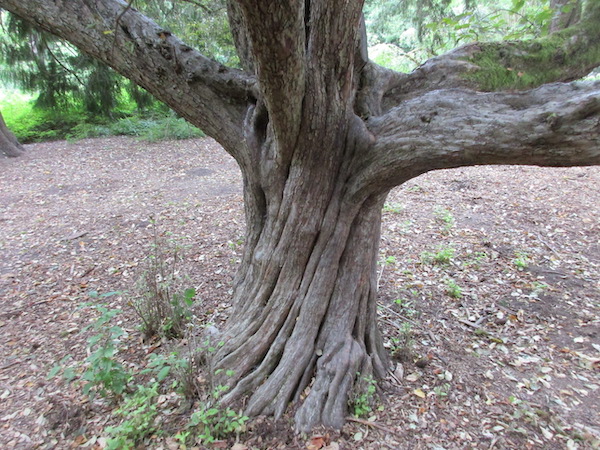
Malus fusca trunk ; photo by ALJ
|
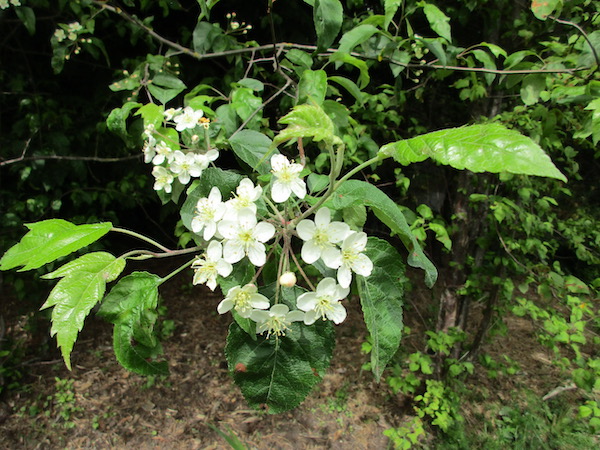
Malus fusca flowers in April ; photo by ALJ
|
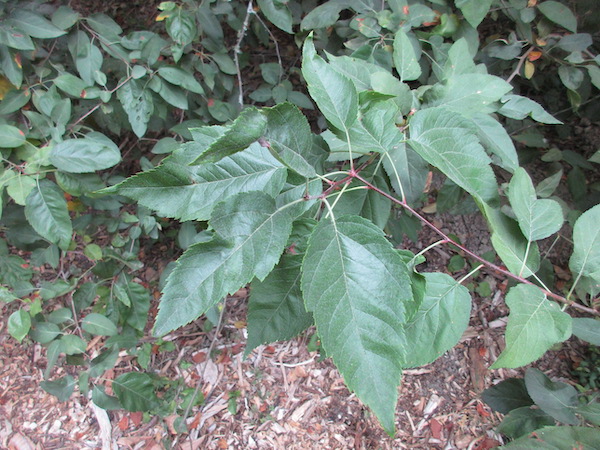
Malus fusca leaves ; photo by ALJ
|
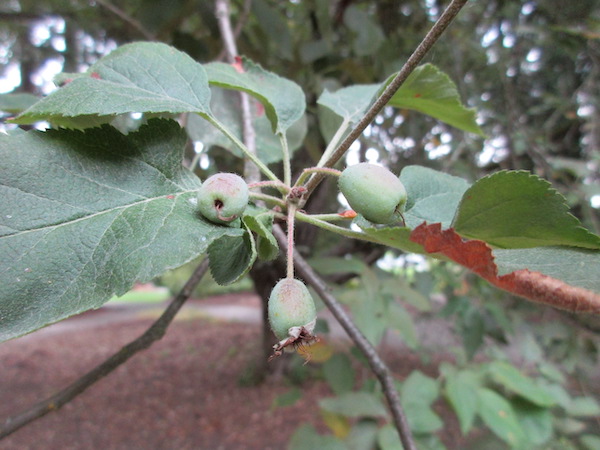
Malus fusca unripe fruits in July ; photo by ALJ
|
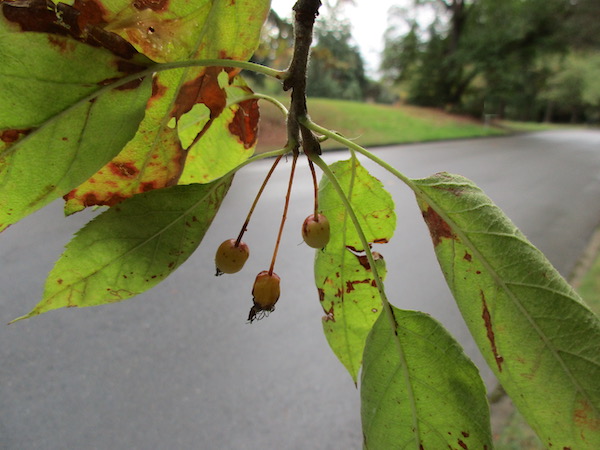
Malus fusca ripe fruits in October ; photo by ALJ
|

